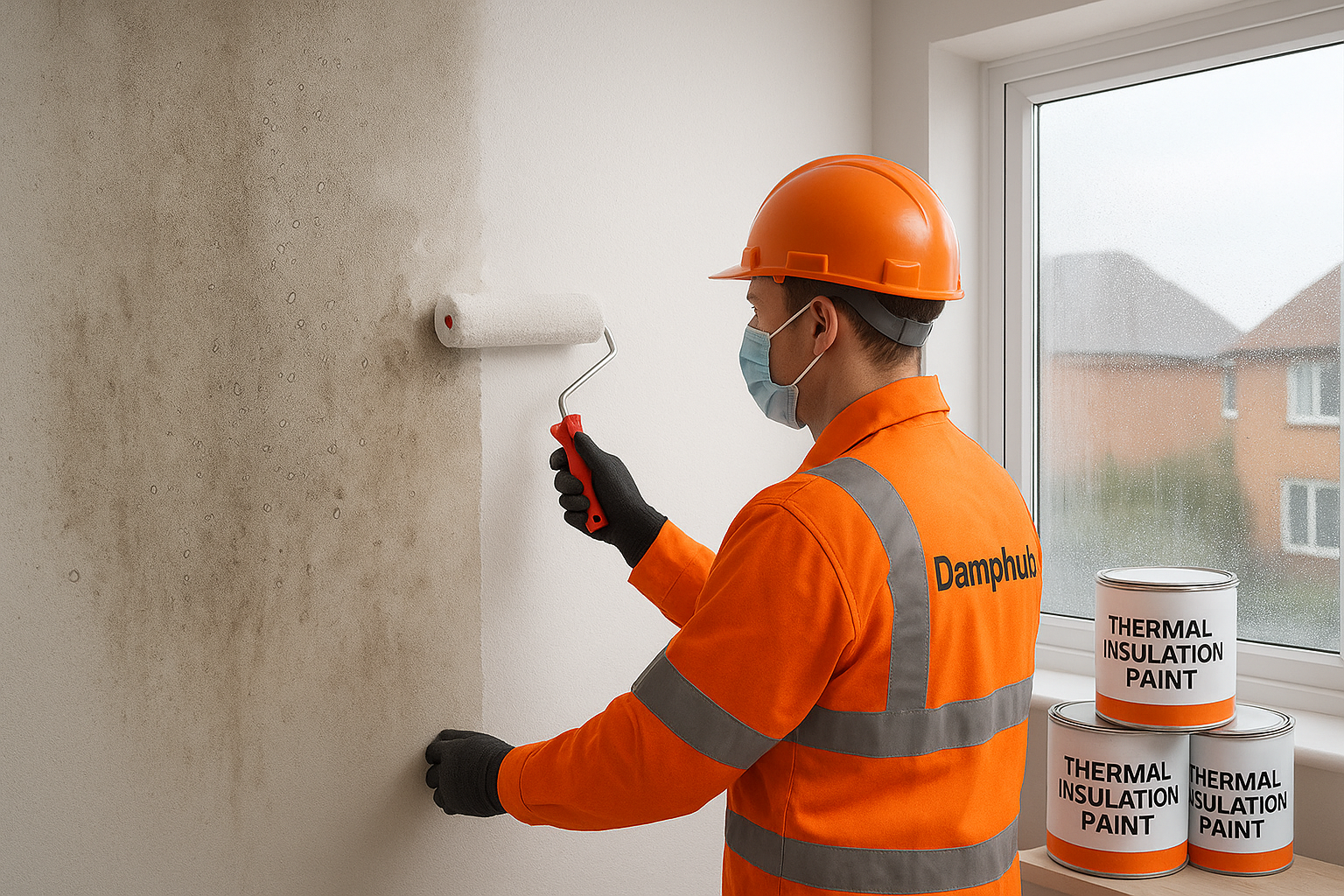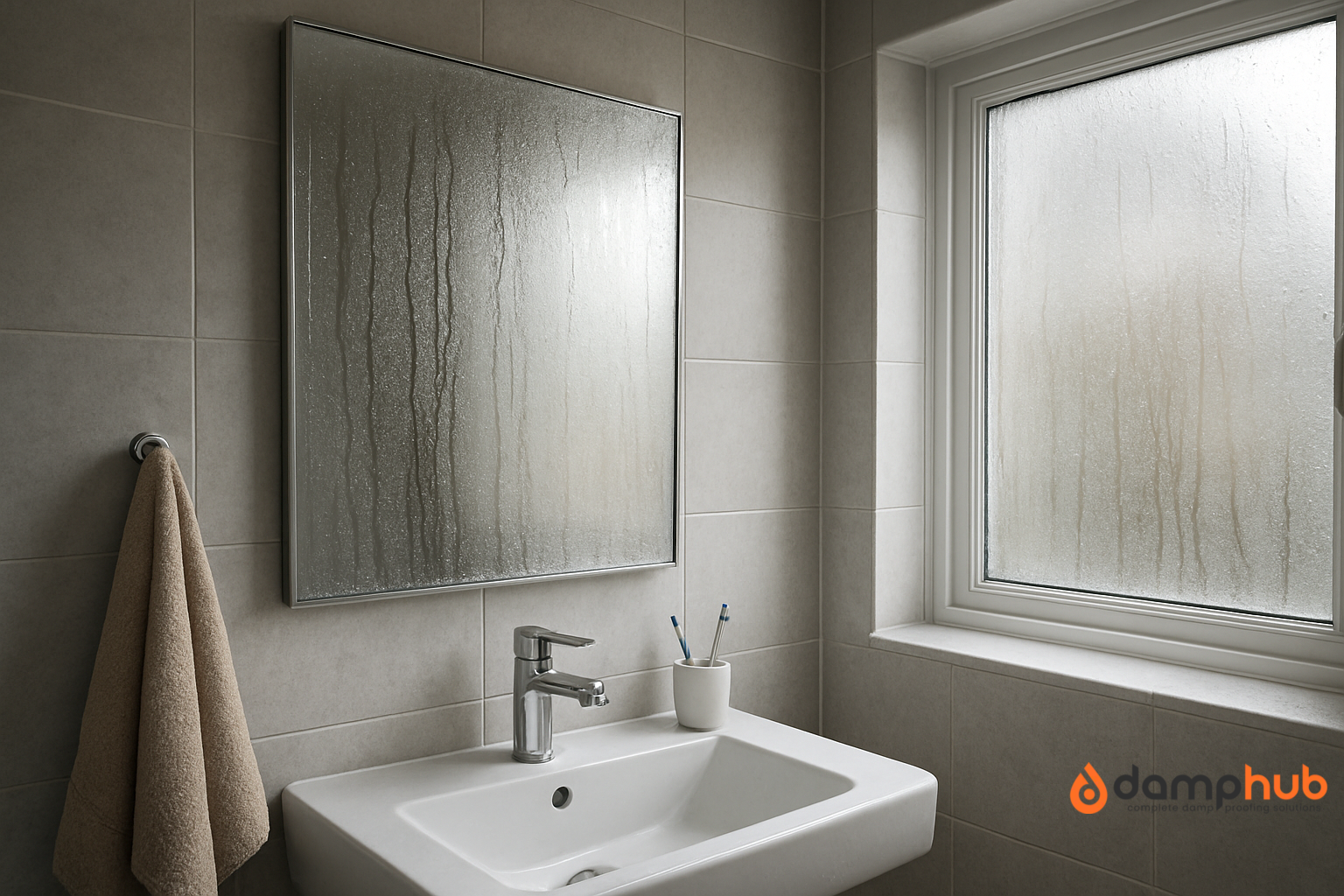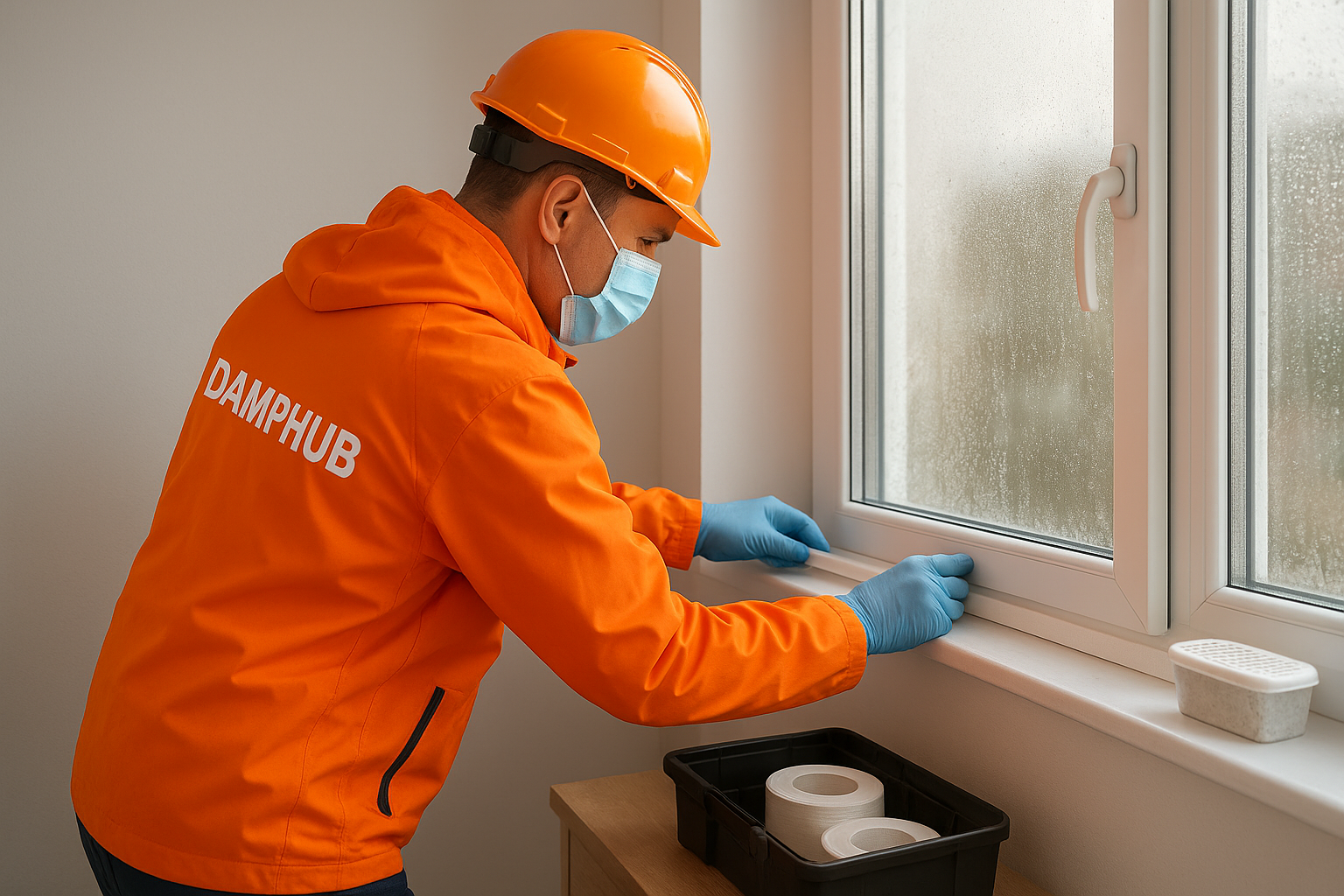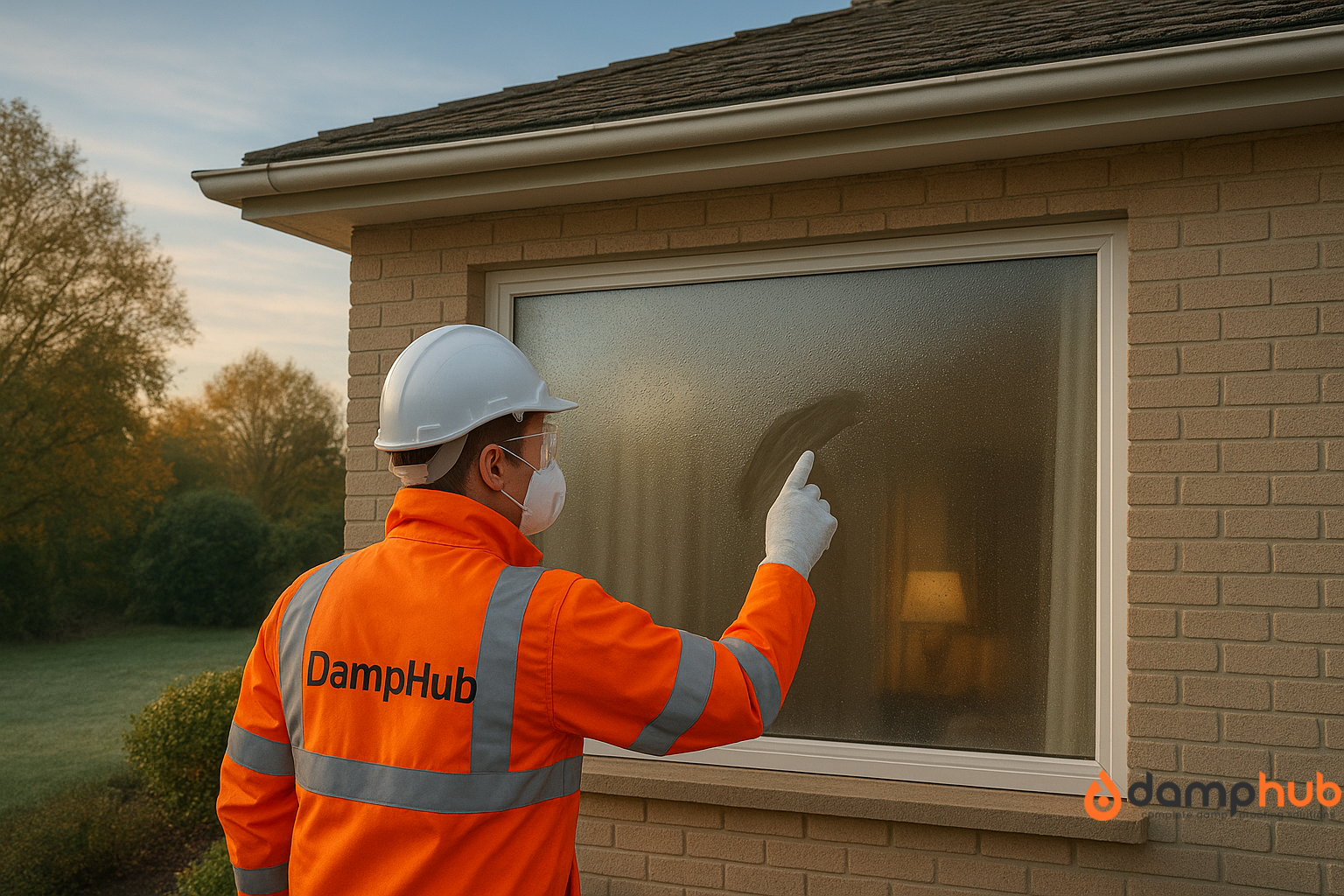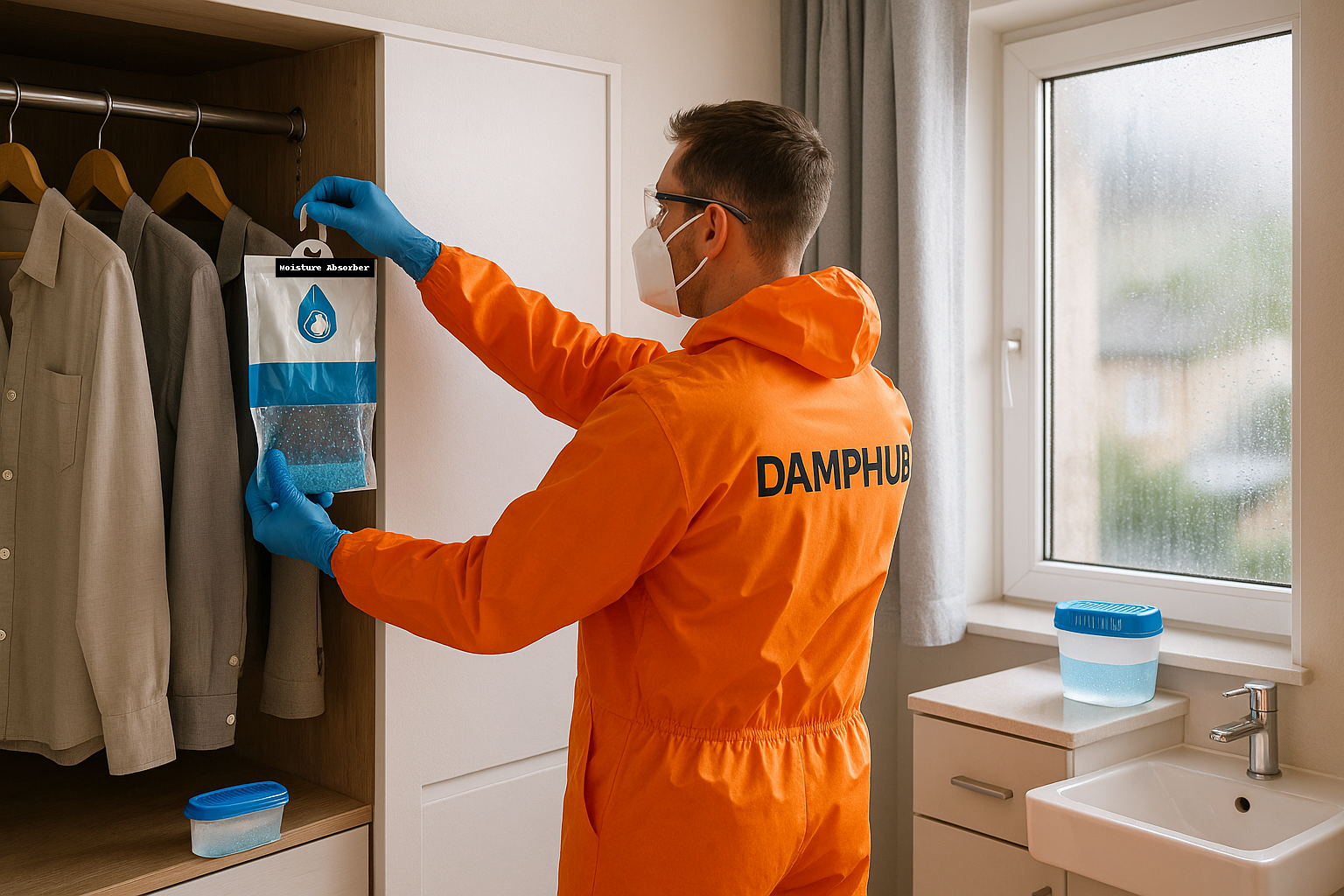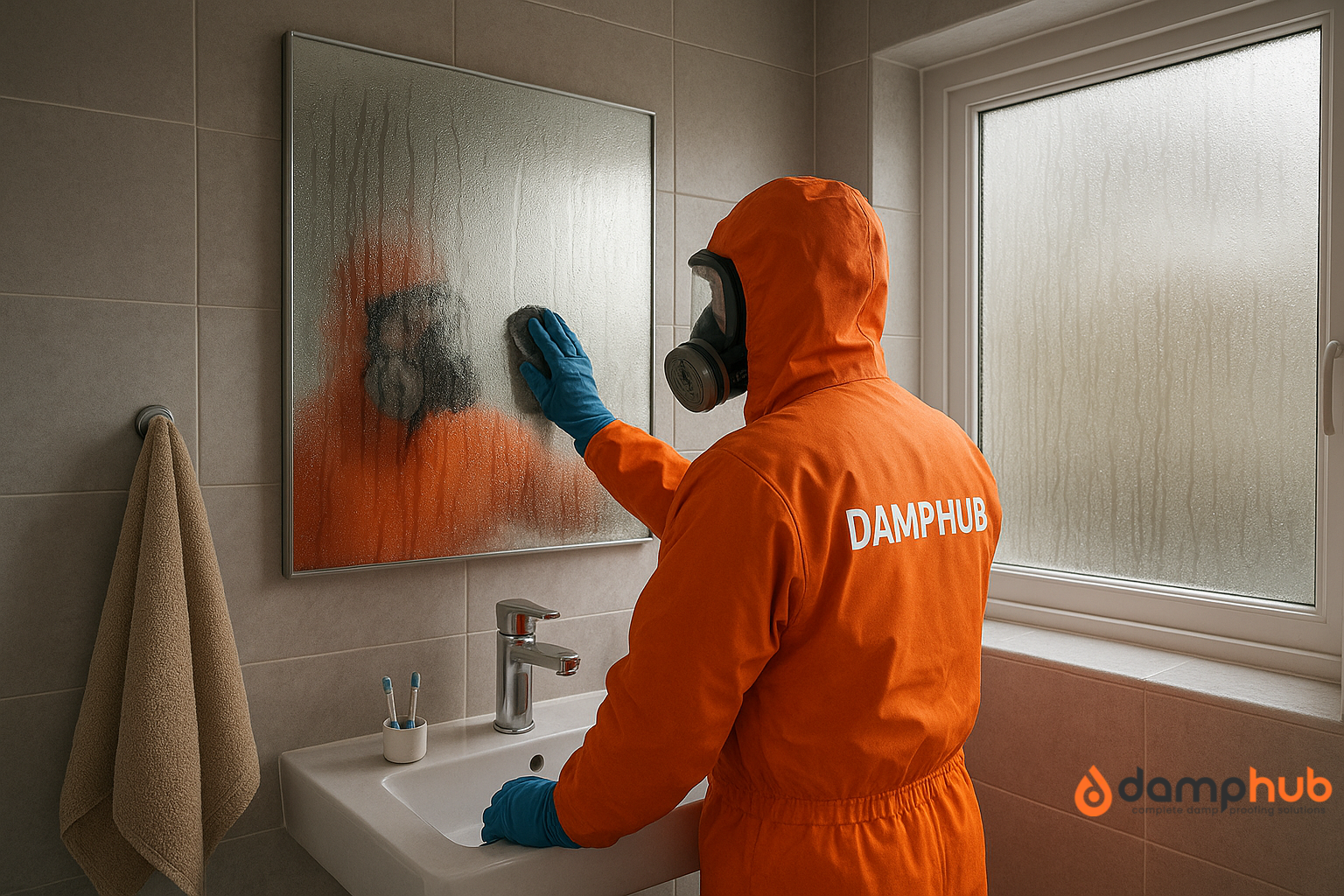
If there’s one room in the house that never seems to escape condensation, it’s the bathroom. Step out of a hot shower, and before you know it, the mirror’s fogged up, water’s running down the walls, and the tiles feel slick. For some households, it’s just a mild annoyance. For others, bathroom condensation becomes a bigger problem, often leading to peeling paint, black mould on the ceiling, and even swollen wood around door frames.
The tricky part is that it’s not just a “winter thing.” Yes, bathroom condensation in winter is usually worse due to the cold surfaces, but it can occur at any time of year if the airflow isn’t right. And if you’ve spotted bathroom condensation on walls regularly, it’s worth taking seriously. Left alone, it doesn’t magically disappear. It builds up, soaks into surfaces, and invites mould and damp.
Let’s discuss why it happens, how to deal with it, and what you can do to prevent your bathroom from turning into a mini rainforest every morning.
But if condensation is showing up in other rooms other than the bathroom, you may also want to explore our other guides:
- Condensation In Bedroom: Here’s Why and How to Fix it Once
- Condensation in Loft: Causes, Fixes & Prevention
Why Does My Bathroom Have So Much Condensation?
A bathroom has many cold surfaces, such as walls, ceilings, tiles, and mirrors. When you take a hot shower or run a bath, steam fills the room. If that moisture has no way to escape quickly, it meets those cold surfaces, cools down, and turns into water droplets. That process is what causes condensation on bathroom walls, ceilings, and glass.
Poor ventilation makes the issue worse. Without a strong extractor fan or an open window, the steam lingers instead of clearing. In winter, the problem is even more noticeable because outside walls and ceilings stay colder for longer, giving the moisture an easy place to settle.
How To Stop Bathroom Condensation
Stopping condensation is rarely about one big fix. It’s usually about layering a few smaller habits that add up. Here are practical things you can do straight away:
- Run the extractor fan longer. Don’t switch it off the moment you step out. Let it run for 15–20 minutes so it can clear lingering steam.
- Open a window, even slightly. A tiny crack gives humid air an escape route.
- Wipe down wet surfaces. A quick squeegee over tiles, mirrors, and shower glass stops water from sitting around.
- Shut the bathroom door. Otherwise, steam drifts into bedrooms and halls, spreading the problem.
- Reduce steam at the source. Shorter showers, a slightly cooler water setting, and keeping the shower screen closed all help.
- Dry towels properly. Don’t leave them bunched up on the radiator — spread them out so they dry quicker instead of feeding extra moisture into the room.
- Declutter corners. Bottles and baskets trap moisture, and steam loves to cling to tight spots behind them.
🛠️ Try This
Run your hand along the external bathroom walls on a cold morning. If they feel damp or clammy compared to internal walls, condensation is already forming where you can’t see it.
These are everyday steps, but to truly get rid of the issue, you’ll want to look at prevention too.
How To Prevent Bathroom Condensation
Prevention is about making the bathroom a place where steam either escapes quickly or never gets the chance to cling in the first place.
Improve Ventilation
Your extractor fan should be strong enough for the size of your bathroom. As a rough guide, a fan should change the air at least 15 times per hour. If your mirror is still foggy after 15 minutes, your fan isn’t cutting it.
Upgrading to a humidity-sensing fan can be worth it. These switch on automatically when moisture levels spike and keep running until the air is clear.
Keep Surfaces Warm
Cold walls and ceilings are condensation magnets. The warmer the surfaces, the less steam sticks. Heated towel rails, underfloor heating, or even a low-level radiator help.
Insulate Where Possible
Poorly insulated ceilings (especially under lofts) or outside walls will always run cold. Adding insulation above the ceiling, sealing draughts, or using thermal wallpaper can make a noticeable difference.
Keep Up Daily Habits
Even with upgrades, daily habits matter. Use a squeegee, run the extractor fan longer, and track humidity levels with a cheap digital hygrometer. You’ll be surprised by how much difference knowing your numbers makes.
How Do I Stop Condensation On My Bathroom Ceiling
Ceilings are often the first place mould appears. Warm air rises, hits the coldest surface, and condenses. Over time, you’ll notice small black spots forming — a sure sign the ceiling is staying damp too long.
Common causes and fixes:
- Poor insulation above the ceiling. Add loft insulation, especially above the bathroom.
- Recessed lights. These create gaps that let warm air escape into colder voids. Switch to sealed fittings.
- Wrong paint type. Standard emulsion absorbs moisture. Use anti-condensation paints, or the vapour-resistant ones instead.
- Extractor placement. Fans installed too far from the shower often miss rising steam. Ceiling-mounted units directly above the shower work better.
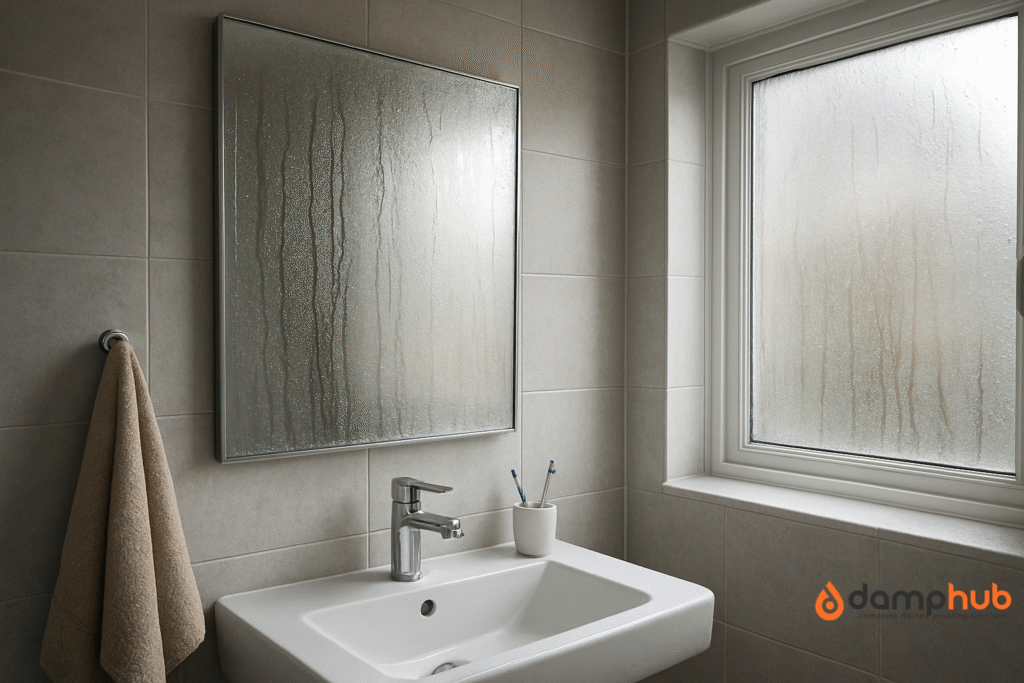
🛠️ Try This
If you notice mould forming in patches instead of evenly, check above those spots. Often, insulation gaps line up with the mould pattern.
How To Stop Condensation In Bathroom Vent
It seems odd, but even vents can suffer from condensation. Steam moves through the duct, cools, and drips back down.
Fixes include:
- Install a backdraft damper. Stops cold air from blowing back in.
- Use insulated ducting. Prevents warm steam from cooling too quickly.
- Keep duct runs short and sloped. A gentle slope outward lets water drain instead of pooling.
- Maintain the fan. Dust weakens airflow. Clean the blades and grille regularly.
How To Stop Condensation On A Bathroom Mirror
A foggy mirror is the classic bathroom complaint. While it won’t damage your house, it’s inconvenient when you’re shaving or getting ready.
Options:
- Improve airflow. Even a cracked door helps steam move away.
- Heated demister pads. These warm the mirror surface enough to stop fog forming.
- Anti-fog sprays or coatings. Works short-term but needs regular reapplication.
- Microfibre cloths. Cheapest option if you don’t mind wiping after every shower.
🛠️ Try This
If you don’t want to fit a demister, try warming the mirror by running a hairdryer over it for 20 seconds. It won’t last forever, but it works in a pinch.
How To Stop Condensation On Bathroom Tiles
Tiles may look sleek, but they love to collect condensation. Water drips down and gathers in grout lines, which quickly turn dark with mould if not dealt with.
Prevention tips:
- Seal grout lines. Hydrophobic sealers stop moisture from soaking in.
- Keep surfaces warm. Underfloor heating or a heated towel rail makes a big difference.
- Improve airflow. Fans should target corners where steam lingers.
- Daily wipe-down. A quick squeegee and removing wet mats keep tiles dry.
Also want to resolve condensation on bathroom windows? See our window-specific guides:
- Condensation Inside Windows: What It Means & How To Fix It
- Condensation on Outside of Windows: What It Really Means for Your Home
Final Thoughts
Bathroom condensation might start small — a foggy mirror, a damp towel, a drip down the wall. But left alone, it becomes a bigger problem: mould, damp patches, even structural damage. The good news? Unlike rising damp or plumbing leaks, this is one problem you can actually control.
It comes down to three things:
- Get the steam out. Ventilation is non-negotiable.
- Keep surfaces warm. Warm walls and ceilings don’t attract as much condensation.
- Don’t let water sit. Wipe it away before it becomes mould.
Whether it’s bathroom condensation in winter making your walls drip, or just the everyday annoyance of a fogged mirror, the fixes are straightforward. With a few habits and maybe a small upgrade or two, you’ll turn your bathroom from a mini rainforest into a space that stays fresh, dry, and much easier to maintain.
Answering Frequent Questions On Condensation In The Bathroom

-
How to get moisture out of a bathroom without a fan?
Open a window during and after showers. Keep the door closed so moisture doesn’t drift into bedrooms. Wipe down tiles and mirrors, and use small moisture absorber tubs in problem spots.
-
What helps absorb moisture in a bathroom?
Disposable or refillable moisture absorbers work. Small plug-in dehumidifiers are another option. They won’t replace good ventilation, but they’ll reduce peaks of humidity.
-
Is a dehumidifier or a fan better for a bathroom?
A fan is always the first line of defence. It actively removes steam as it’s created. A dehumidifier helps if ventilation is poor, but it’s more of a backup. Ideally, use both — a fan daily and a dehumidifier as support in winter.
-
How to stop condensation in a bathroom with no window?
An extractor fan is essential. Regulations often require it in new builds. Without one, you’ll be left wiping walls daily and emptying dehumidifiers. If wired fans aren’t possible, a through-wall vent is better than nothing.


